Exploring Dubai's Museum of the Future: A Visionary Hub
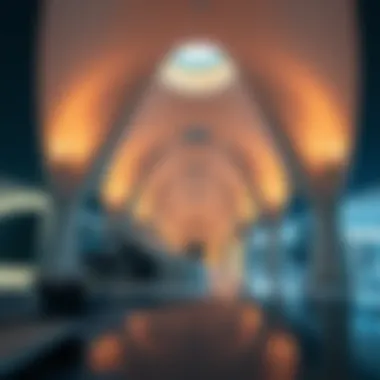
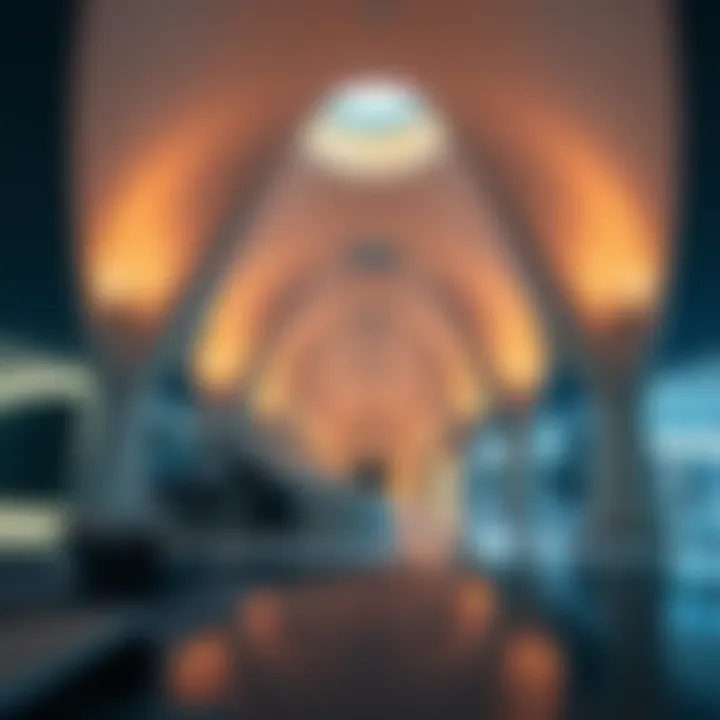
Intro
In a world increasingly shaped by innovation and technology, few places encapsulate the spirit of the future quite like Dubai's Museum of the Future. This stunning icon not only represents a leap in architectural design but also signifies a broader trend in urban development and cultural evolution. For investors, real estate professionals, homeowners, expatriates, and renters alike, understanding this landmark's role in the context of Dubai's growing landscape can provide essential insights into market trends and opportunities.
The Museum sparks curiosity and excitement, offering visitors a glimpse into how society might look in coming decades. This is not just about futuristic exhibits; it's about the cultural and technological metamorphosis that Dubai itself is undergoing. By dissecting these facets, we aim to unveil why this museum is a cornerstone in shaping both the city and its demographic shifts.
We'll explore critical market trends translating into a changing urban fabric, including emerging neighborhoods that are crucial to watch. Likewise, opportunities abound for those looking to invest, whether with a short-term mindset or focusing on long-lasting strategies. The narrative here is not merely about buildings or artifacts—it’s about a vision for the future, making this exploration vital for anyone wishing to navigate Dubai's dynamic real estate terrain.
Prelims to the Museum of the Future
The Museum of the Future in Dubai is not just a building; it is an ambitious endeavor that showcases the vibrant tapestry of innovation and creativity that Dubai has woven over the years. This museum represents a fascinating intersection between technology, design, and cultural foresight. Individuals interested in the realms of architecture, urban development, and technological evolution should take note. The very essence of this museum reflects a vision that extends beyond mere exhibits; it embodies a forward-thinking mindset that anticipates the challenges and opportunities of tomorrow.
Purpose and Vision
At its core, the Museum of the Future aims to be a catalyst for dialogue surrounding future advancements and societal change. It serves as a platform where ideas flourish and where thinkers, innovators, and everyday individuals can converge. The museum was conceived not only to display innovative ideas but also to inspire visitors. By looking ahead, it encourages visitors to explore questions that lead to groundbreaking solutions. The intention is laid out clearly; this institution fosters curiosity and support for the next generation of thinkers who will shape our world.
The museum's vision is expansive. It seeks to push the boundaries of what we know, merging the past with the future. Education is a cornerstone here, as the museum provides the tools and environment necessary for learning about technology and how it impacts humanity. Whether through workshops or interactive exhibits, the focus remains steadfast on shaping an informed and inquisitive populace. Visitors leave not just with memories but with a renewed sense of purpose.
Significance in Dubai's Landscape
Dubai's cultural landscape is a rich and ever-evolving one, where tradition meets rapid modernization. The Museum of the Future occupies a vital role in this intricate tapestry. It stands as an emblem of Dubai’s commitment to becoming a global hub for creativity and innovation. The architectural brilliance of the structure alone draws eyes and minds alike, but the real significance lies in its contribution to the community and beyond.
The museum is strategically positioned within the larger context of Dubai's urban development. It complements existing cultural landmarks, allowing for a cohesive narrative of progress. More than a tourist attraction, it is a beacon for investors, positiononing the city as an influential player on the world stage. As Dubai continues to grow, so does the museum's role as a key player in its evolution.
Additionally, the Museum of the Future acts as a magnet for aspiring entrepreneurs and creators. It showcases possibilities in technology fields and promotes investment opportunities, drawing local and international interest. In doing so, it enhances not only the economic landscape but also the social fabric by uniting diverse communities through shared experiences and ideas.
In summary, the Museum of the Future is a microcosm of Dubai’s aspirations, embodying the values of innovation, collaboration, and progress. Both its purpose and significance resonate loudly, making it a worthy focal point of discussion, especially for those keen on investing in the future.
Architectural Design
The architectural design of a structure like Dubai's Museum of the Future isn't just about aesthetics; it's a compelling narrative that weaves technology, sustainability, and artistry into a cohesive whole. This structures does not merely serve as a venue for exhibitions; instead, it represents a bold leap into the future of architectural thought. It invites an analysis of how design can influence the cultural landscape, provide environmental benefits, and incorporate cutting-edge technology into its very fabric.
Innovative Structure
The form of the Museum of the Future is truly distinctive. It’s shaped like a toroid, a figure that resembles no other existing structure, and this is no accident. This innovative structure is designed to not just catch the eye, but also to provoke thought. Encased in a sleek, reflective facade, the building appears to transcend traditional architectural norms, embodying a dynamic emblem of what’s possible when creativity meets engineering. The free-flowing shape fosters a sense of exploration, much like the ideas within it.
Moreover, the design enables optimal space utilization without conventionally structured corners or walls. Think of it like navigating a modern art painting—each corner and crease leads to a new perspective, igniting curiosity in every turn. This is particularly crucial in an age where the spaces we inhabit are becoming ever more pivotal to our experience as visitors. The experience is not static, nor is it confined; it encourages active engagement with the myriad of exhibits inside.
Sustainable Practices
In a city renowned for extravagant developments, the Museum of the Future stands out not just for its visionary design, but also for its commitment to sustainability. The architectural strategy includes initiatives to minimize the carbon footprint and maximize efficiency. The incorporation of energy-saving technologies and materials sees the museum informally aligned with the goals of Dubai’s Green Vision initiative.
For instance, more than 40% of the museum's energy requirements are met through solar power. This commitment to utilizing renewable energy sources sets a precedent for similar developments in the region. It promotes a model where architectural ingenuity doesn't equate to environmental sacrifice. To take it a step further, water management systems recycle existing resources, effectively lowering the impact on local aquifers.
Sustainable practices at the Museum of the Future highlight how innovative architecture can serve as a blueprint for greener urban development. It’s not merely a nice-to-have; it’s a fundamental rethinking of how structures can contribute positively to their settings.
Use of Cutting-edge Technology
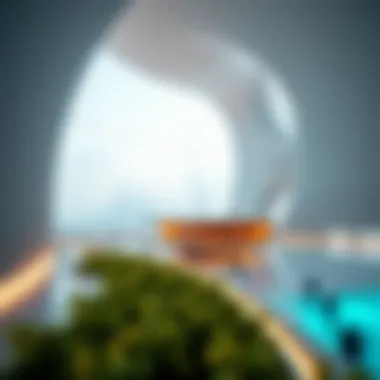
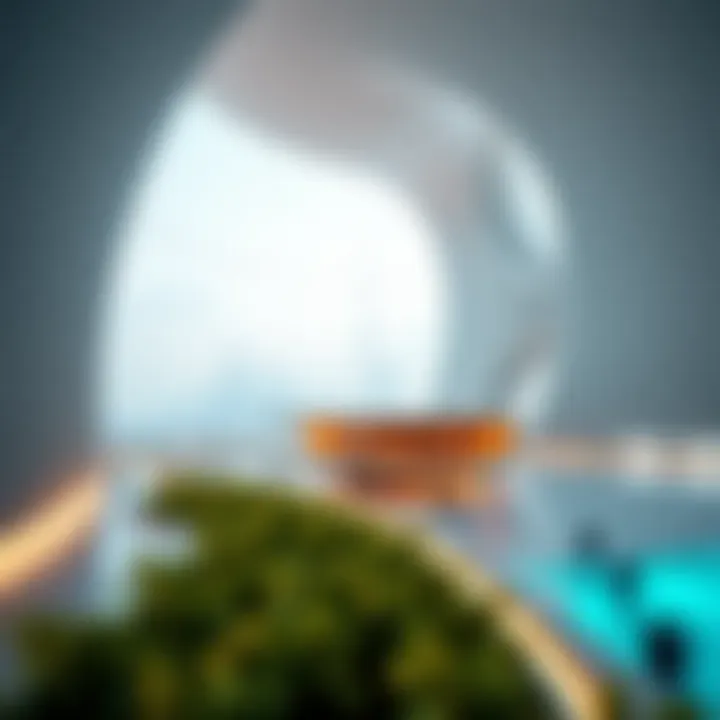
At the very core of the Museum of the Future lies an intricate tapestry of technologies that enhance both the visitor experience and operational efficiency. From the building materials to the display systems, tech is embedded at all levels. For example, artificial intelligence is woven throughout the museum—displaying a live feed of energy consumption, guiding visitors through interactive displays, or even customizing shows based on visitor engagement patterns.
Additionally, smart building technology is employed to manage environmental controls, lighting, and security systems seamlessly. This is akin to having the best kind of invisible servant—one that ensures comfort without demanding attention.
The incorporation of augmented and virtual reality in exhibits takes the engagement levels up a notch, allowing visitors to immerse themselves in the content, making the experience multi-dimensional. Here, technology serves as a bridge between the past and future, challenging visitors to think critically about the world they inhabit and its trajectory.
Exhibitions and Installations
The exhibitions and installations at the Museum of the Future aren't simply displays but are rather intricate narratives aiming to transport visitors into realms of possibility. These carefully curated experiences formulate the backbone of the museum's unique appeal. The importance of these artistic representations lies in their ability to not just inform, but to engage, provoke thought, and even challenge the status quo surrounding technology and culture in contemporary life. Each installation acts as a portal, offering glimpses into potential futures while also highlighting pressing global issues. This dynamic interplay is essential as it keeps visitors returning, eager to see how the narratives evolve.
Themes Explored
At the heart of every exhibition is a theme designed to provoke curiosity and inspire innovation. The Museum of the Future showcases a range of topics, from sustainability and health to artificial intelligence and city planning. These themes are not only relevant but are also interwoven with the fabric of daily life.
- Sustainability: Many installations focus on eco-friendly solutions, encouraging visitors to think about their environmental footprint. Through interactive displays, guests learn how technology can harmonize with nature.
- Health and Well-being: The museum explores the future of medicine, incorporating wearables and AI diagnostics to spotlight advancements that could reshape healthcare.
- Urban Mobility: Offering insights on the future of transportation, exhibits illustrate innovations that could make cities more navigable and eco-friendly.
Fusing art with science, each theme is more than just a talking point; it is a call to action for visitors to reflect on the impact of technology on their surroundings.
Interactive Experiences
Interactivity is where the magic really happens at the Museum of the Future. Visitors aren’t passive observers; they are active participants. The exhibits often feature technology that responds in real time, ensuring that each person's visit is unique.
- Virtual Reality: Some installations use virtual reality to transport guests into futuristic surroundings, allowing them to experience the possibilities of advanced urban landscapes.
- Augmented Reality: These elements often enrich physical exhibits, overlaying digital information that enhances understanding of complex topics.
- Hands-on Activities: Exhibits designed for engagement encourage exploration through DIY projects or touchscreen interfaces, facilitating personal interaction with the concepts presented.
By blending technology with creativity, these interactive experiences enable a deeper understanding of the ideas at stake, showing how they might shape lives in very tangible ways.
Future Narrative Concepts
The futuristic narratives conceptualized through the exhibitions at the Museum of the Future aim to grasp the viewers' imagination and raise questions about what lies ahead. Broadly, these concepts focus on the ethical implications of technology, the role of humanity in a tech-driven world, and the necessity of balancing innovation with empathy.
These narratives unfold along several dimensions:
- Ethics in AI: Several installations challenge visitors to contemplate artificial intelligence's evolving role in society. Questions about privacy, bias, and decision-making arise, igniting discussions about accountability in technology.
- Human-Centric Design: The theme of placing people at the center of technological development is a recurring narrative. Many displays advocate for designs that prioritize user experience and accessibility.
- Exploration of New Frontiers: Beyond digital realms, the museum delves into outer space and beyond. Exhibitions speculate human advancement in exploration, questioning humanity's ultimate role on the cosmic stage.
"Understanding where we could be tomorrow is as crucial as knowing where we stand today."
In synthesizing these innovative themes, interactive experiences, and future narratives, the Museum of the Future positions itself as not just an attraction but as a critical hub for forward-thinking dialogue. This venture addresses not merely technological advancements or artistic expression, but intertwines them to influence society positively. It is pivotal for investors, realtors, and anyone interested in Dubai's cultural landscape, as it emphasizes the ways in which innovation is vital for the future of urban life.
Cultural Context
Understanding the cultural context surrounding the Museum of the Future in Dubai is crucial. This landmark serves not only as a repository of innovation but also as a symbol reflecting the city’s deep-seated traditions. The interplay between heritage and modernity characterizes Dubai's unique ethos and offers valuable insights for investors, realtors, homeowners, expatriates, and renters seeking to navigate this thriving environment.
Fusion of Tradition and Innovation
The Museum of the Future is a remarkable demonstration of how tradition and innovation can coexist harmoniously. At first glance, its architectural design does not resemble traditional structures found in Dubai; however, it deeply respects the cultural roots of the region. For instance, the building’s shape, inspired by the Arabic calligraphy, echoes the significance of language and art in Emirati culture. This nurturing of traditional elements within a futuristic context positions the museum as a bridge connecting the past to the rapidly advancing future.
This fusion manifests in various ways within the museum. For example, some exhibitions highlight ancient cultures alongside emerging technologies, inviting guests to see the relationship between historical achievements and contemporary developments. The museum encourages visitors to reflect on how generations have shaped the present and what legacies they can leave for the future. Such a perspective not only enriches the experience for visitors but also instills a sense of pride among the local populace.
The approach of interweaving tradition with innovation doesn't just enrich the museum's offerings; it attracts discerning visitors who appreciate the depth of Dubai's heritage. As a consequence, this strategy fosters investment opportunities and encourages economic development by appealing to a global audience fascinated by both the past and the future.
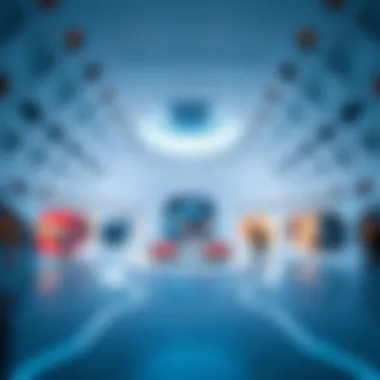

Impact on Local Culture
The impact of the Museum of the Future on local culture is profound and multi-layered. As a gathering space for locals and tourists, it acts as a cultural hub, driving engagement within the community. The exhibitions present various subjects that resonate with diverse demographics, enhancing cultural willingness and understanding.
Moreover, the museum holds a mirror to society, offering reflections on values, beliefs, and aspirations. It draws on cultural narratives that highlight the role of the UAE in the global context. By presenting stories of resilience, innovation, and hope, the museum cultivates a shared identity that speaks to both the Emirati heritage and the multicultural tapestry of Dubai’s inhabitants.
Additionally, investment into projects like this stimulates local artisans, thinkers, and innovators, encouraging them to contribute their unique perspectives. It creates a flourishing environment where cultural dialogues thrive, ultimately benefiting not just the museum's vision but also the city’s broader aspirations to be a global leader in innovation and culture.
In essence, the Museum of the Future does not merely exist as a physical structure; it plays a pivotal role in shaping local culture, providing a platform where tradition meets modernity, thus redefining the identity of Dubai in the context of an interconnected world.
Economic Implications
The Museum of the Future transcends conventional tourist attractions; it acts as a significant driver for economic growth in Dubai. This museum isn’t just about technology and culture; it embodies the very essence of modern-day investments and tourism, reflecting the aspirations of a vibrant metropolis aiming to position itself on the global stage. With its innovative designs and transformative exhibitions, this landmark encapsulates opportunities for both current and future stakeholders.
Investment Opportunities
The financial landscape surrounding the Museum of the Future is ripe with potential. Various sectors stand to benefit from the economic momentum initiated by this institution.
- Real Estate Development: The museum’s location in the heart of Dubai has elevated local property values. Investors recognize the potential for accompanying developments, both residential and commercial, looking to capitalize on the museum's draw.
- Tech Innovations: Companies that specialize in technology and interactive experiences see this as a prime ground for presenting groundbreaking projects, which can lead to collaborations and investment opportunities. The museum serves as a launching pad for tech startups oriented toward futuristic solutions.
- Sustainable Initiatives: As sustainability becomes a key focus globally, investors are keen on projects associated with sustainable practices exhibited in the museum.
- Public-Private Partnerships: The success of the museum invites investments from private sector organizations eager to align their brands with innovation and forward-thinking ideologies.
The blend of culture and technology proves fertile ground for financial returns, making it a beacon for investors targeting the future.
Tourism Impact
Tourism has been one of the keystones of Dubai's economy, significantly contributing to GDP. The Museum of the Future serves as a magnet for both local visitors and international tourists, drawing attention to the city’s ambition and innovation.
- Increase in Visitor Numbers: Since its opening, the museum has attracted a diverse audience. Each new exhibit brings in fresh foot traffic, resulting in increased demand for nearby hotels, restaurants, and entertainment venues.
- Cultural Exchange: The museum promotes a blend of cultures, fostering an understanding of Dubai’s commitment to global conversations. Tourists looking for unique experiences often include visits to such landmark sites in their itineraries, further disseminating cultural appreciation.
- Support for Local Businesses: As tourists flock to the area, local business ecosystems are enhanced. Shops, cafes, and service-oriented businesses see improved sales and growth, further bolstering the economic climate.
- Event Hosting Potential: With facilities designed for conferences, exhibitions, and events, the museum can host significant gatherings that bolster not only immediate revenue but also long-term visibility and prestige for Dubai.
Through its dynamic offerings, the Museum of the Future not only enriches the visitor experience but also acts as a strategic asset in promoting Dubai as a global destination.
"The Museum of the Future has redefined what cultural institutions can achieve in a modern city, bridging the gap between technology and human experience."
Investment opportunities and tourism impact are deeply intertwined within the Museum of the Future's framework, establishing it as a cornerstone of Dubai's economic strategy, with a sustained influence likely to extend well into the future.
Future Visions and Extensions
The Future Visions and Extensions section delves into the ambitious undertakings that aim to propel Dubai's Museum of the Future into a beacon of innovation and a hub for futuristic dialogue. As the museum embodies the spirit of discovery and creativity, understanding its ongoing projects and long-term goals is paramount to grasping its role in shaping the cultural and technological landscapes of Dubai and beyond.
Ongoing Projects
Currently, several initiatives are in motion that enhance the museum's offerings and infrastructure. These projects not only aim to improve visitor experiences but also focus on integrating advanced technologies that can redefine how people interact with exhibits. One notable project is the development of virtual reality experiences that will allow visitors to engage with innovations that haven't yet materialized.
Additionally, partnership agreements with various tech firms are paving the way for collaborative exhibitory projects. These alliances facilitate the sharing of knowledge and resources, ensuring that the exhibits remain aligned with current global trends in technology and society. Moreover, the museum is exploring connections with universities and research institutes, which would foster a think tank environment within its walls, generating new ideas and pushing boundaries in fields like sustainable urban development and health innovations.
It is essential for investors, expatriates, and entrepreneurs to keep an eye on these developments, as they hold the potential for investment opportunities that might emerge as the museum expands its reach and influence. The ongoing projects will not only enhance foot traffic but are also bound to reshape Dubai’s standing as a hub for innovation.
Long-term Goals
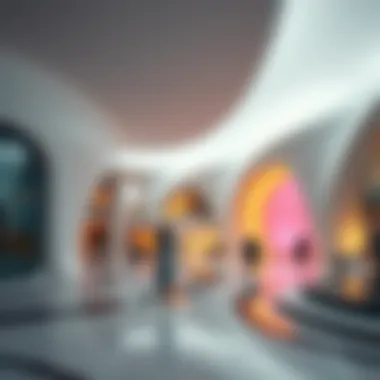
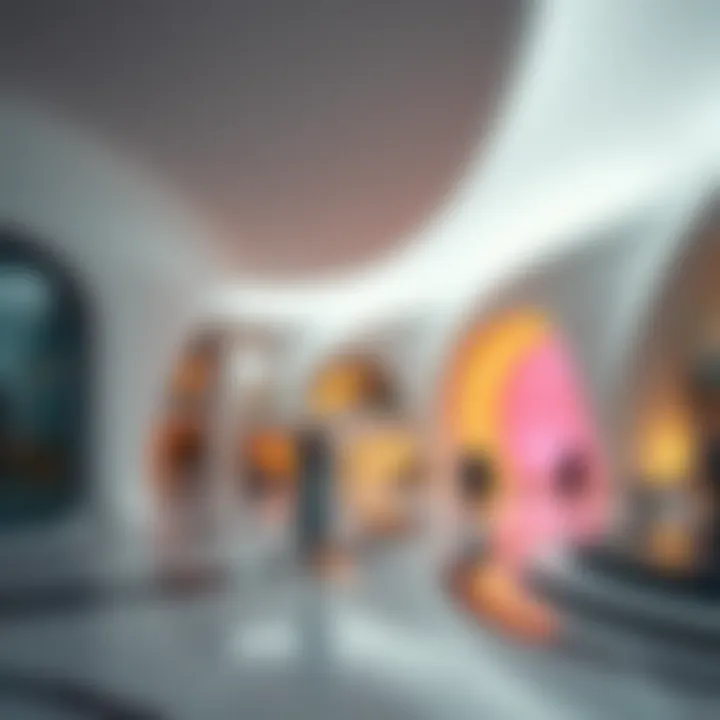
In terms of long-term aspirations, the Museum of the Future is focused on becoming a preeminent destination for global thinkers, innovators, and cultural custodians. As it already stands as a symbol of progress, the museum aims to deepen its impact by committing to the United Nations' Sustainable Development Goals, emphasizing sustainability in all new endeavors.
The long-term strategy includes establishing a capstone program to promote interdisciplinary research that crosses traditional boundaries. The goal is to create spaces within the museum that regularly host international conferences, workshops, and showcases, thus fostering a vibrant community of innovators and thought leaders.
Furthermore, outreach programs designed to inspire the next generation of leaders in science, technology, and the arts will become integral. These initiatives are aimed not just at locals but also global youth, thus positioning Dubai's museum as a global educational platform.
"The future belongs to those who can imagine it, design it, and execute it." – This saying underscores the vision for the Museum of the Future, aiming to create an environment conducive to such innovation.
In summary, the Future Visions and Extensions of the Museum of the Future encapsulate an evolving narrative, crucial for stakeholders involved in Dubai's architectural, cultural, and economic fabric. The ongoing projects and planned goals indicate a transformative journey ahead, not just for the museum, but also for the city that borders it.
Relevant links for further insight include:
- Museum of the Future Official Website
- UN Sustainable Development Goals
- Dubai Investment Development Agency
- Wikipedia Page on Dubai
Keeping abreast of these initiatives offers stakeholders a lens into the future that the Museum of the Future is sculpting, making it an essential point of reference for those invested in Dubai’s growth.
Public Reception
Public reception is a crucial lens through which to evaluate the Museum of the Future's impact. How a venue is perceived by its visitors often defines its legacy. This museum, with its futuristic vision, embraces not only innovation but also the sentiments of those who walk through its doors. It serves as a vibrant hub of ideas, a place where people engage with the unknown and reflect on their own perceptions of the future.
The reception from visitors can provide valuable insights into the museum's success and areas where it can improve. Public feedback acts almost like a compass, guiding the museum's future projects and exhibitions. There is a certain magic in dialogue; it’s where the museum can evolve based on the audience’s emotional and intellectual reactions.
Visitor Feedback
When we talk about visitor feedback, it’s worth noting that it encapsulates a range of responses—some positive, some critical. Responses to the Museum of the Future tend to lean towards the optimistic side, with many marveling at its architectural splendor and innovative exhibits. Visitors commonly express their appreciation for the interactive experiences that allow them to touch, feel, and even influence what they see.
In fact, a significant percentage of visitors mention how the exhibits stimulate their imagination, leaving them pondering real-life applications of the concepts presented. However, some critiques surface as well. For instance, a number of attendees find certain exhibitions too abstract, questioning their relevance to tangible daily life. This mix of praise and skepticism is vital for the museum, as it is indicative of a thoughtful engagement with the topic of the future, even if it leads one to scratch their head occasionally.
Critical Acclaim
Turning to critical acclaim, the Museum of the Future has piqued the interest of numerous analysts and cultural critics. They're not only celebrating its aesthetic design, which is often described as a daring leap into what architecture can embody, but also its forward-thinking approach. The thoughtful integration of technology and artistic creativity has won it several awards.
"The Museum of the Future is more than just a building; it’s a living canvas that presents a myriad of future realities—each as intriguing as the last."
Critics emphasize that the museum opens up dialogues around urgent global issues such as climate change, technological disruptions, and societal transformations. This is not merely an art gallery; it is a platform for critical discourse. Nevertheless, a few argue that the museum could broaden its reach, catering more to local sentiments and presenting exhibitions that resonate with the immediate community.
The End
The conclusion stands as a pivotal element in this exploration of Dubai's Museum of the Future. It wraps up the comprehensive insights provided throughout the article, allowing us to reflect on the museum's profound role in shaping a vision for the future and its significance within a rapidly evolving urban environment.
Reflections on the Museum's Role
The Museum of the Future is much more than just an architectural achievement. It's a bold statement about where humanity is headed, acting as a bridge between tradition and innovation. From its dynamic exhibitions that beckon visitors to ponder emerging technologies to its integration of art and culture, the museum serves as a canvas for imagination and possibility.
Visitors often express a sense of awe upon arrival, with many appreciating how the building itself seems to challenge the notion of what a museum can be. It’s a gathering spot where ideas collide, igniting discussions about ethics in technology and the sustainability of future cities. Public feedback often highlights a desire for engagement with these deep topics, signaling that people are not just passive consumers of information but active participants in the dialogue about our future.
Implications for Dubai's Future
The implications for Dubai's future are substantial. As the city lays the groundwork to become a global hub of innovation and technology, the Museum of the Future stands at the forefront of this strategic vision. It’s not simply a place to exhibit; it serves as a catalyst for attracting international talent and investment. The museum promotes the growth of the knowledge economy, positioning Dubai as a leader in futuristic urban planning.
- Cultural Investment: The museum represents a shift toward valuing cultural institutions as integral to economic and social development. This encourages both public and private sectors to invest in cultural initiatives.
- Tourism Growth: As a unique landmark, the museum is likely to boost tourism, drawing visitors keen on experiencing cutting-edge technology and innovative design. This influx can enhance local businesses and services, leading to broader economic benefits.
- Educational Impact: With interactive exhibits and educational programs, the museum fosters a culture of learning, appealing to all ages. This aspect significantly contributes to human capital development.
"As we reflect on the role of the Museum of the Future, it is clear that its existence is a clear signal toward a forward-thinking society eager to embrace change and foster innovation."
As the world looks to Dubai for inspiration, the museum encapsulates hope and ambition, reminding us that the future is something we create together.



